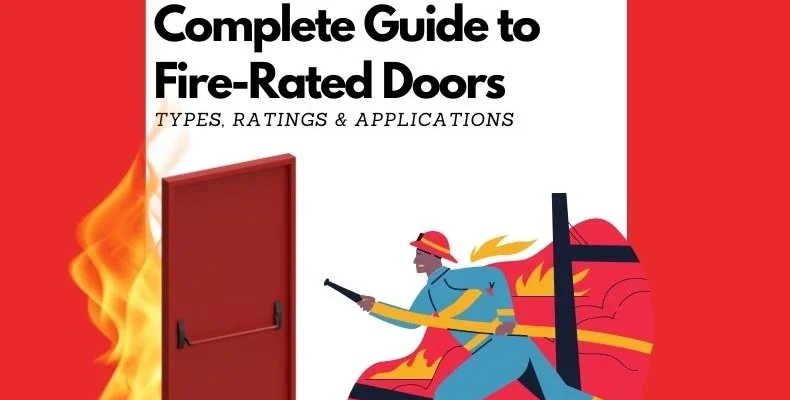Key Takeaway: Fire-rated doors are essential life-safety components that compartmentalize fire and smoke, safeguard occupants, and ensure code compliance across residential, commercial, and industrial buildings. Specifying the correct type, rating, and installation practice is crucial for performance and regulatory adherence
Introduction
Doorways, often overlooked, are critical barriers against the rapid spread of fire and smoke. In an emergency, a properly specified fire-rated door can mean the difference between containment and catastrophe. Today’s construction landscape demands meticulous attention to fire safety- especially as regulations evolve. This comprehensive guide uncovers everything you need to know about fire-rated doors: from types and material choices to time-based ratings, Indian standards, and real-world applications. Whether you’re an architect, facility manager, or homeowner evaluating your next build, you’ll gain actionable insights to enhance safety, comply with codes, and partner confidently with experts like KOR India.
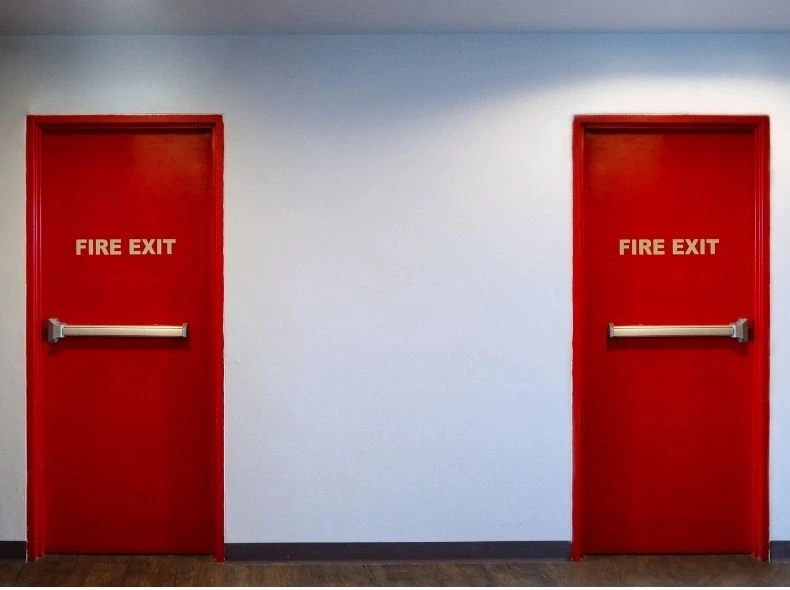
1. What Is a Fire-Rated Door?
A fire-rated door is specially designed and tested to withstand fire exposure for a specified period-commonly between 20 minutes and 2 hours. Constructed from fire-resistant materials and fitted with intumescent seals, these doors expand under heat to seal gaps, preventing smoke and flame passage. Unlike standard doors, fire-rated doors undergo rigorous certification to ensure they maintain structural integrity, limit heat transfer, and slow smoke infiltration.
2. Key Benefits of Fire-Rated Doors
Fire-rated doors serve multiple critical functions:
- Life Safety: They create compartments that slow fire spread, allowing safe evacuation.
- Property Protection: By containing flames and heat, they limit damage to assets and interiors.
- Regulatory Compliance: Buildings must meet local and national fire codes, or face penalties and insurance issues.
- Insurance Advantages: Premium discounts often apply when fire-rated assemblies are installed.
- Noise & Thermal Insulation: Many fire doors also improve sound attenuation and thermal performance.
Through these benefits, fire-rated doors are not just code-mandated necessities but strategic investments in safety and operational continuity.
3. Fire Door Ratings: Understanding Time Classifications
Fire doors are classified by the duration they can resist fire:
| Rating | Duration (minutes) | Typical Applications |
| FR-20 | 20 | Residential corridors, shafts |
| FR-45 | 45 | Offices, light commercial |
| FR-60 | 60 | Multi-storey buildings |
| FR-90 | 90 | High-rise cores, stairwells |
| FR-120 | 120 | Essential services rooms |
Longer ratings demand thicker cores, denser materials, and advanced seal systems. Therefore, mapping required rating to the occupancy type and compartment size is vital.
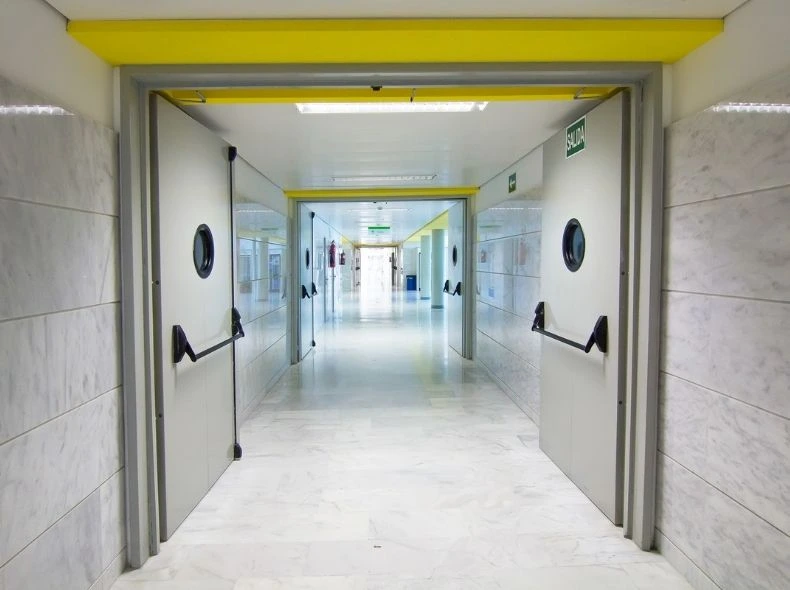
4. Types of Fire-Rated Doors
4.1 Steel Fire Doors
Steel doors offer durable, cost-effective solutions for FR-60 to FR-120 requirements. Hot-rolled steel panels, bonded with mineral wool cores, deliver excellent structural strength and minimal maintenance.
4.2 Timber Fire Doors
Engineered timber doors with mineral-filled cores meet FR-20 to FR-60 ratings. They blend aesthetics with performance, ideal for hospitality or heritage projects requiring wood finishes.
4.3 Glass Fire Doors
Laminated glass doors with ceramic fire-resistant interlayers achieve FR-20 to FR-60 ratings while permitting light transfer. Used in lobbies, atriums, and modern office environments.
4.4 Composite Fire Doors
Combining metal skins with resin-impregnated cores, composite doors deliver tailor-made ratings and design flexibility. They serve specialized industrial applications where chemical or moisture resistance is also crucial.
5. Regulatory Standards & 2024–2025 Updates
National Building Code of India (NBC)
- Specifies minimum FR-45 for corridor doors in high-rise residential buildings.
- Requires FR-60 for stairwell and lift lobby doors to maintain protected egress.
Bureau of Indian Standards (BIS)
- IS 3614: Fire-resistance tests for doors and shutters.
- IS 2202: Classification of fire doors by duration and fire source side.
International Standards Referenced
- ASTM E119 and UL 10C (USA) for testing procedures.
- EN 1634 (Europe) for integrity and insulation assessments.
Updates for 2024–2025:
- Stricter smoke leakage limits added to NBC to enhance early-stage containment.
- Mandatory intumescent seals on all fire door installations, per BIS circular issued March 2024.
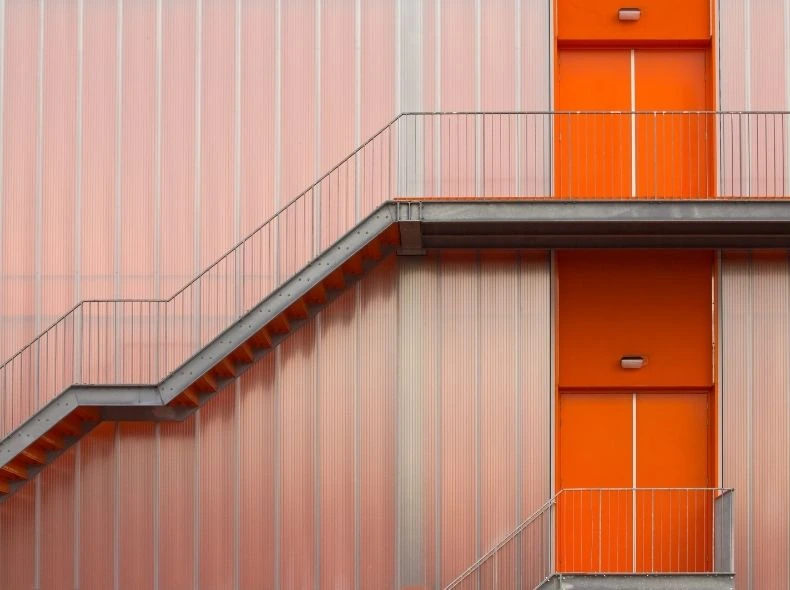
6. Applications by Sector
6.1 Residential Buildings
In apartment complexes, fire doors isolate stairwells and passageways, ensuring residents have a safe exit path even if a flat catches fire.
6.2 Commercial & Office Spaces
Open-plan offices incorporate glass fire doors to balance aesthetics with protection—especially around server rooms and meeting pods.
6.3 Healthcare Facilities
Hospitals demand FR-90 doors between wards and corridors to prevent smoke migration, safeguarding vulnerable patients.
6.4 Industrial & Pharmaceutical Plants
Chemical storage and manufacturing areas require FR-120 composite doors that resist both fire and corrosive vapors.
6.5 Educational Institutions
Universities and schools specify FR-60 in libraries and lecture halls; gymnasiums often upgrade to FR-90 for spectator galleries.
7. Installation Best Practices
7.1 Framing & Hardware Requirements
- Use steel frames with continuous welds for FR-60+ doors.
- Hardware (hinges, locks, closers) must be fire-rated and listed by BIS or UL.
7.2 Seals, Closers & Vision Panels
- Install intumescent seals on all edges and drop seals at thresholds.
- Glass panels require fire-resistant glazing and be limited to 25% door area for FR-60+.
7.3 Inspection & Maintenance Protocols
- Conduct quarterly inspections for seal integrity and door alignment.
- Lubricate hardware yearly and replace damaged seals immediately to preserve rating.
8. Comparison Table: Fire Door Materials & Ratings
| Material | Rating Range | Pros | Cons |
| Steel | FR-60 to 120 | High strength, low maintenance | Heavier, higher cost |
| Timber | FR-20 to 60 | Aesthetic warmth, customizable | Susceptible to moisture |
| Glass | FR-20 to 60 | Light transmission, modern look | Limited rating, costlier glazing |
| Composite | FR-60 to 120 | Tailored performance, corrosion-resistant | Specialized manufacturing |
9. Why KOR India Leads in Fire-Rated Door Solutions
KOR India is the trusted partner for fire-rated doors across India. With over a decade of expertise:
- In-house testing labs ensure each door meets or exceeds BIS and international standards.
- Custom fabrication capabilities to design unique profiles, finishes, and specialized ratings.
- Pan-India installation network with certified technicians.
- Comprehensive after-sales support, including regular maintenance contracts and emergency repairs.
Choosing KOR India guarantees unmatched product quality, regulatory adherence, and peace of mind.
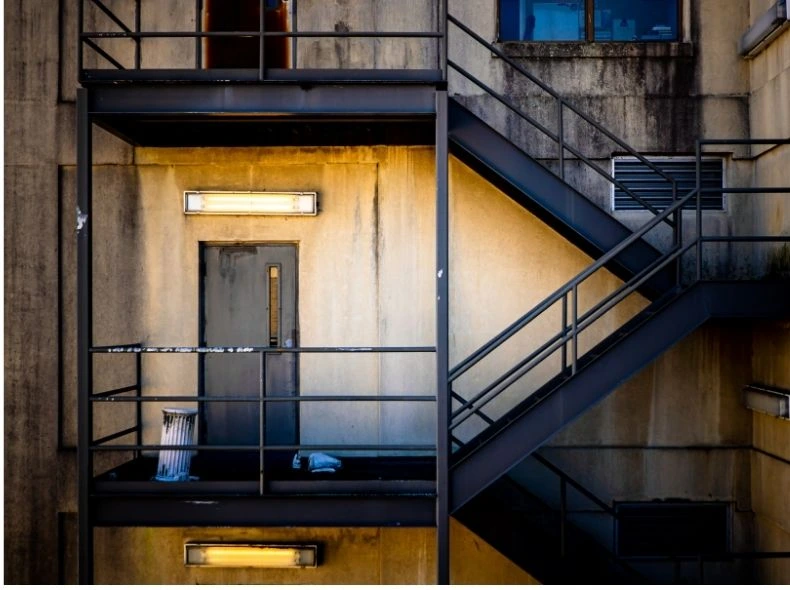
11. Frequently Asked Questions (FAQ)
1. What is the minimum fire rating required for apartment corridor doors?
Per NBC 2024, FR-45 is mandatory for residential corridors in buildings over three stories.
2. Can I install a fire-rated door myself?
Professional installation by certified technicians is recommended to ensure compliance and performance under fire conditions.
3. How often should fire-rated doors be inspected?
Quarterly visual inspections and annual hardware servicing maintain integrity and rating performance.
4. Are glass fire doors safe for high-rise applications?
Yes—when specified FR-60 with fire-resistant glazing and proper intumescent seals, they meet high-rise safety requirements.
5. Do fire-rated doors also provide sound insulation?
Many fire doors offer additional acoustic ratings; consult KOR India’s technical team for combined fire and sound-rated solutions.
Protect your building and its occupants with certified fire-rated doors from KOR India.
Contact our experts today for a free consultation and specification guide tailored to your project needs.
- Phone: +91- 85271 06390
- Email: info@korindia.in
- Website: www.korindia.in

